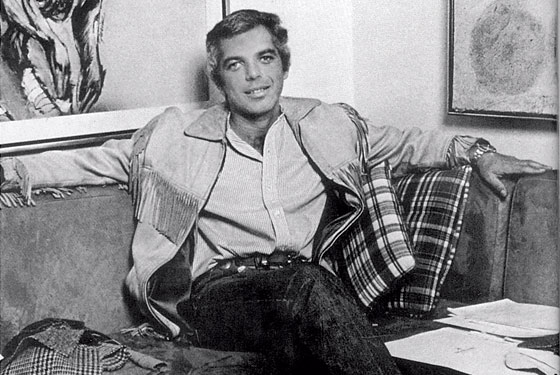How American Jews Toppled Paris Couture and Redesigned the Fashion Industry
Ralph Rueben Lifshitz’s father was a housepainter who longed to be an artist. His mother, green-eyed Frieda Lifshitz, insisted that Ralph and her other three children attend yeshiva in the hope that they would bring her “Jewish nachas.” But Ralph, born in 1939 in the Bronx, had other ideas. While other kids in the fifties were wearing motorcycle jackets, he saved money from after-school jobs to buy oxford shirts, crew neck sweaters and white high-top sneakers. When he couldn’t find clothes to match his instincts, he designed his own.
Encouraged by his father, who appreciated his sense of color and texture, Lifshitz, by then Ralph Lauren, founded his own company in 1968, choosing the name Polo to evoke the power and style of the upper-class sport. From the start, his clothes reflected the gentrified sensibility of polo matches, yacht clubs and family crests. He became the breakout design star of the post-war era, a pioneer who understood the global hunger for assimilation.
Today, Lauren is ubiquitous in fashion, head of a powerful global empire that designs all of its products—from sportswear to fragrances to home furnishings and even paint—with an aura of casual American comfort and upper-crust British class. In keeping with the Polo image, Lauren has perfected his persona as a charter member of the white Anglo-Saxon Protestant establishment. He’s a car enthusiast who maintains a world-class collection of rare automobiles, and a patriot who helped the Smithsonian Institution restore the flag that inspired The Star-Spangled Banner.
Ralph Lauren’s parents had come from Belarus, and his success can be in part attributed to his immigrant upbringing. “By virtue of his status as an outsider, he was able to look at WASP culture and see and create the fantasy of it,” says Alana Newhouse, editor of Tablet Magazine. Like other Jewish designers, including Calvin Klein, Donna Karan and Isaac Mizrahi, he owes something to the generations of Jews who made and peddled clothes throughout Europe, most of whom never saw an English country estate, stepped foot on a yacht or heard of polo.
In Europe, only a few professions were open to Jews. Largely barred from owning land, they were forced to earn their living as tailors or traders, honing skills that would serve them well in the New World. They arrived in 19th-century America just as a new technology—the sewing machine—was revolutionizing the apparel business. As Americans moved from the farm to the city and began buying from the Sears & Roebuck catalogue or the general store, a new industry of ready-made clothes began to take shape. Jewish immigrants streamed into the cities, providing cheap labor for garment factories in New York, Philadelphia, Boston, Baltimore and elsewhere. “Based in urban centers and pushed by history toward entrepreneurship, Jews found fashion one of the fields open to them,” says Valerie Steele, a historian at the Fashion Institute of Technology in New York.
It was one of those paradigm-shifting moments in history. As author Malcolm Gladwell writes in Outliers: The Story of Success, the Jewish immigrants had the skills to match the times: “To come to New York City in the 1890s with a background in dressmaking or sewing or schwittwaren handlung (piece goods) was a stroke of extraordinary good fortune. It was like showing up in Silicon Valley in 1986 with ten thousand hours of computer programming already under your belt.”
Jewish immigrants had another advantage—a talent for reinventing themselves and a sensitivity to image. Centuries of wandering had bred a unique antenna for the cultural zeitgeist of gentile society. That inheritance translated into a keen understanding of what would sell. In a country where image was king, Jews created looks that spoke not to their ethnic backgrounds but to their instincts about how Americans saw themselves—and of how the world would see America.


full informative and nice article Today, Lauren is ubiquitous in fashion, head of a powerful global empire that designs all of its products—from sportswear to fragrances to home furnishings and even paint—with an aura of casual American comfort and upper-crust British class
thanks ……….
I enjoyed learning about Ralph Lipshitz Lauren was raised by his Kewish family and became interested in fashion.